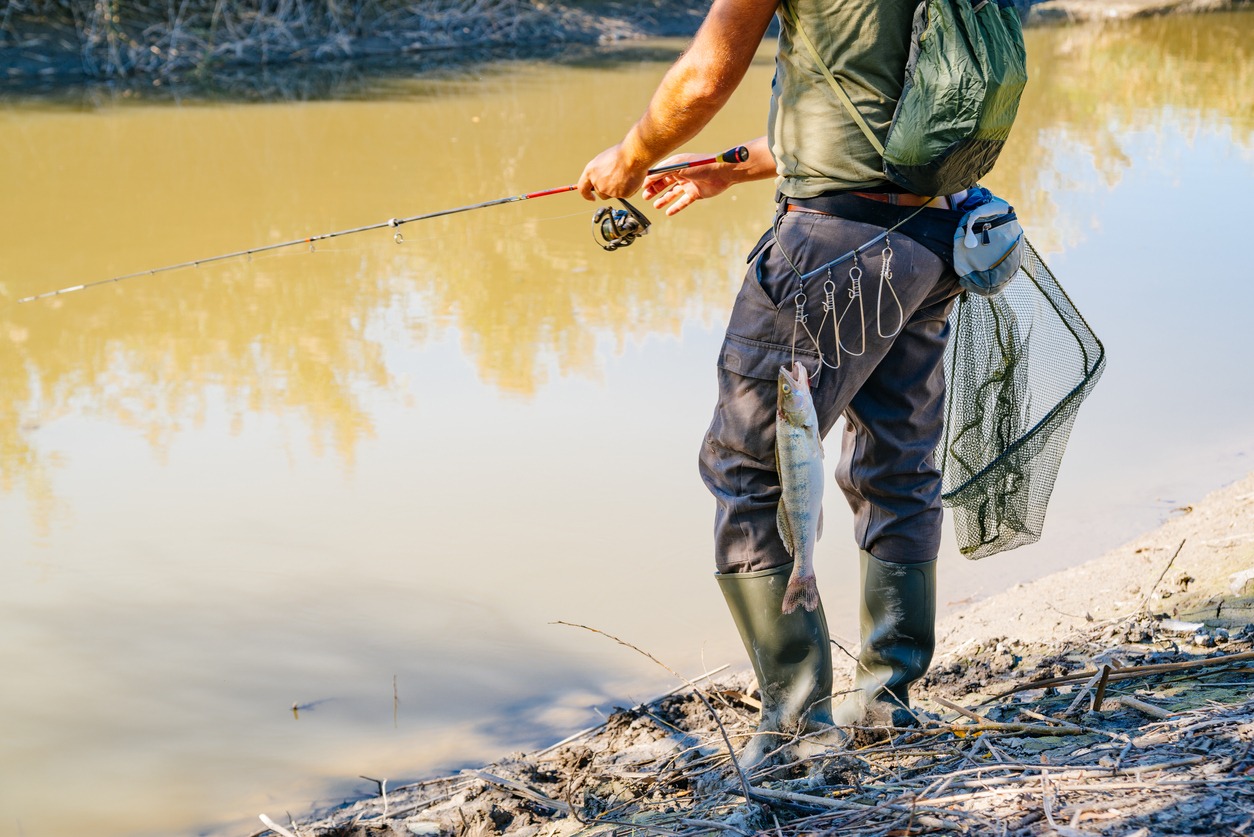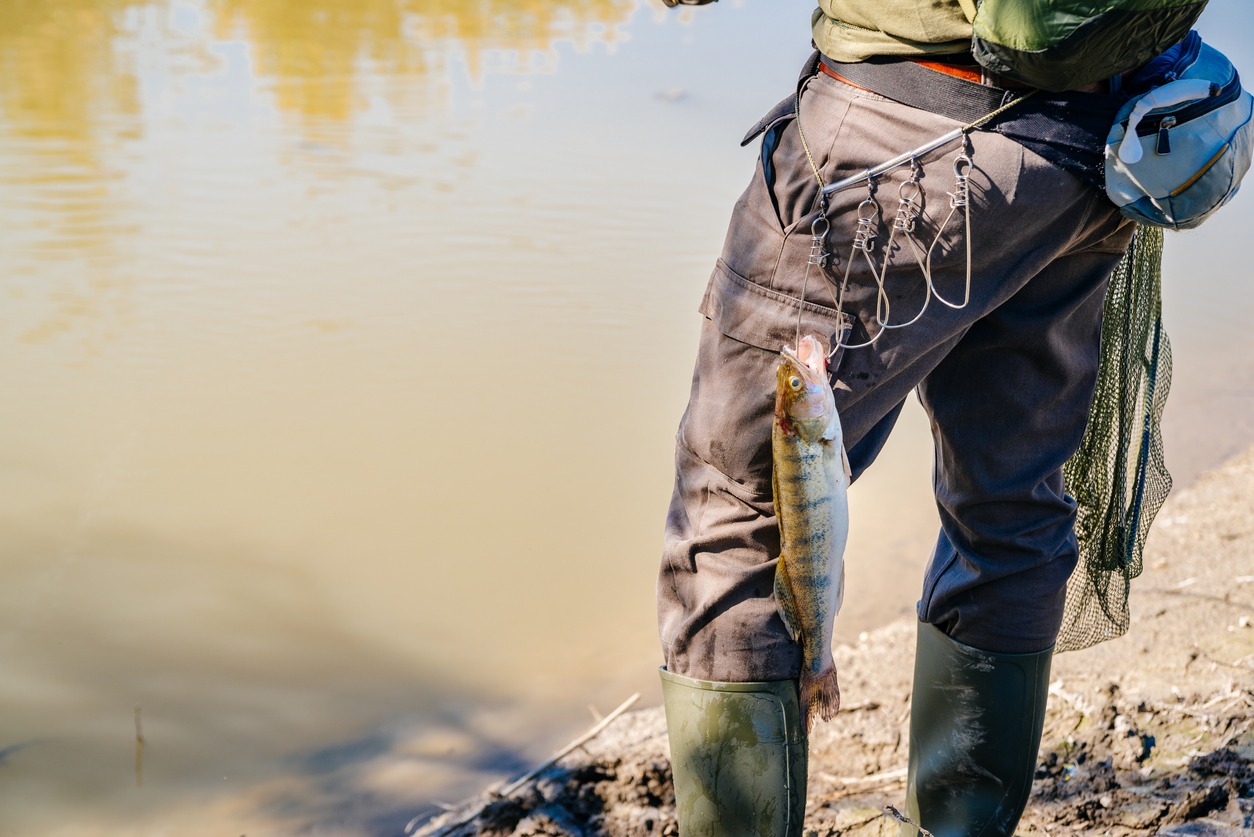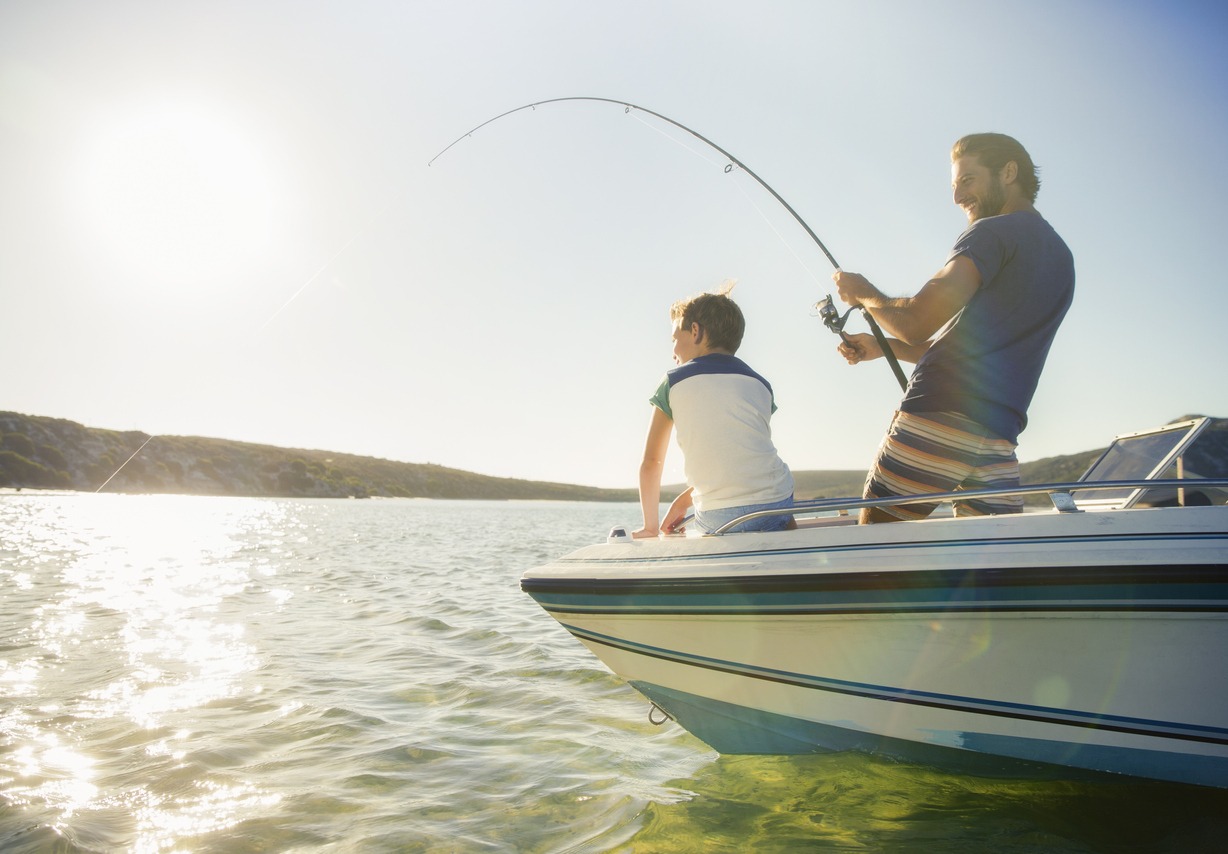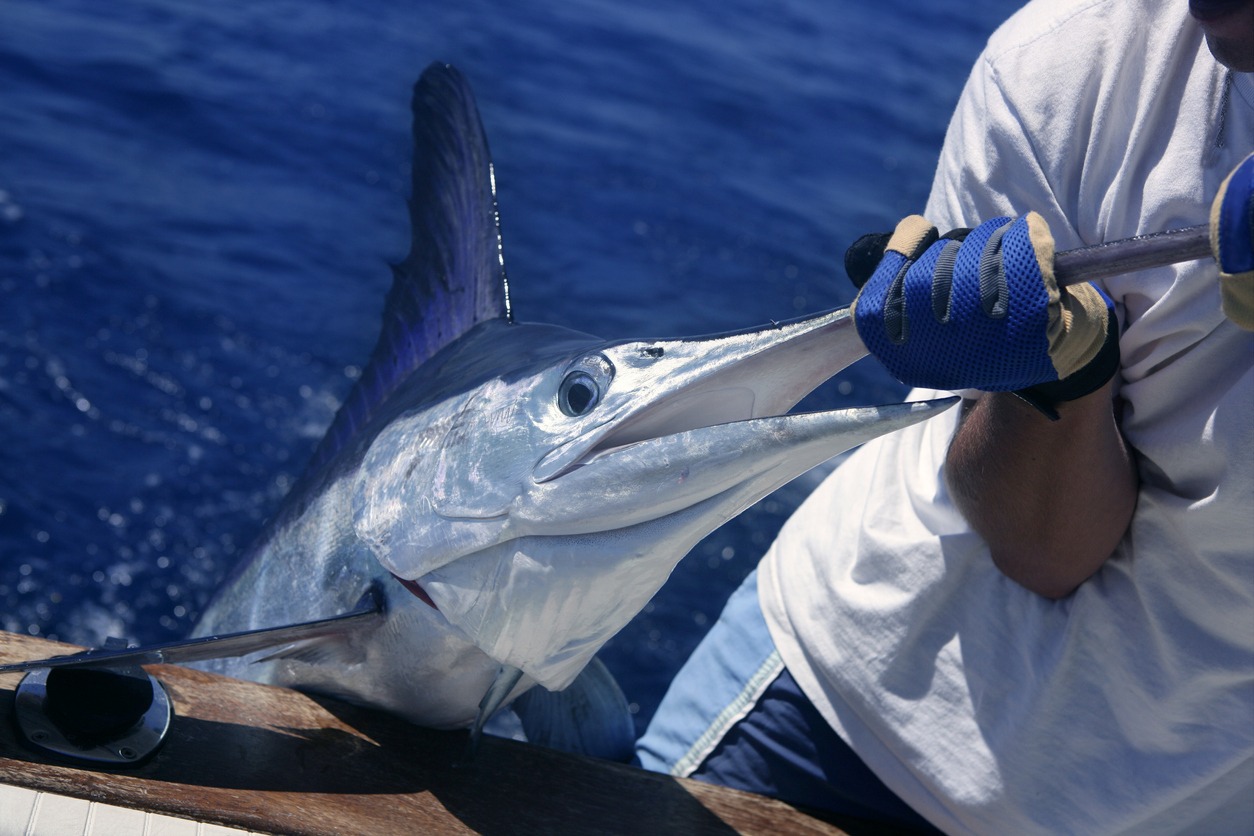Fishing belts are much more than a fashion statement. They are designed to help support the fishing rod and your back when you catch larger fish. These belts are an essential part of an angler’s gear because they make fishing and catching your fish much easier. If you are a frequent large fish fisher, you may strain your back trying to pull up heavier fish using your fishing rod. Using a fishing belt, you can ease that strain.
When fishing, the most effective way to fight and catch large fish is to stand up and pull, but this position can be tiring in the long run, which is why fishing belts are essential. Like fishing rods, a fishing belt is determined by the kind of fish you catch and your size. It is vital that you choose one that fits well so it can support you adequately.
What Is a Fishing Fighting Belt?
A fishing fighting belt is worn around an angler’s waist and is connected using velcro straps. On this fishing aid, the velcro straps are highly adjustable and allow a large range of age groups to wear a single belt. These belts have a hard plastic molding with a gimbal mounted in the center. This gimbal is designed to hold the butt of your fishing rod, so it does not poke you at awkward angles.
When the butt of the rod is mounted in the gimbal, it allows you leverage, using which you can pull up heavier fish. These belts are designed to put you at an advantage over the fish and reduce bruising if the butt of the fishing is against your body.
How It Works
When you are fishing, and a fish strikes the bait attached to your rod, it may start pulling at the line. This is when you should place the butt of the rod into the gimbal of the fishing belt. Your belt must be positioned securely over your thighs.
With a fishing belt, you have a mechanical advantage over a fish. In this case, your body weight will be the force that allows you to move the load through the fulcrum and the lever. The fulcrum is the point where the rod is attached to the body, and the lever is the fishing rod.
To aid in this process, the flex of your fishing rod and the drag setting of the reel will help buffer and control the release of pressure. This will help prevent the fish from breaking the line attached. In such cases, you should be able to easily use your own body weight without putting in extra force.
Advantages of Using Fishing Belt
Using a fishing belt has many advantages, due to which it has become essential fishing gear. These belts provide comfort and added strength, making fishing an enjoyable pastime.
When fishing, the weight of the rod pressed against your bare hands and legs for extended periods can become uncomfortable and even painful. Since fishing requires patience, it is unlikely that you can speed up the process. To ease the pain, you can use a fighting belt, which will help you reduce the pressure placed on your body by the rod. As fishing rods have straps that wrap around your waist, they distribute the weight.
The second advantage of a fishing belt is that it gives added strength when pulling up a big catch. These belts act as a lever, as it distributes the weight of the rod throughout your thighs and lower body. This allows you to employ strength from those areas when fighting a particularly powerful fish.
How to Setup Your Belt and Harness
There is a pivot joint with all stand-up set-ups and where this point is located will determine how the harness and belt combination will be set-up. There are three line classes that are likely to be used in fishing and here are the details on how to set them up.
| Gear Class | Description |
| 30 to 50 lbs. class gear | To wear a fishing belt in this class gear, you need to keep the pivot point at the knees. The first step is to step into your harness and position the gimbal to be at a spot that feels comfortable. Next, adjust the length of the strap so that the tip of the rod is around 15 degrees above a 180-degree position. Ensure that the rod gimbal is level with the tops of your thighs. |
| 50 to 80 lbs. class gear | For this class gear, ensure that the pivot remains at your knees. If there is an increased resistance of drag, you may need to lean back to compensate for it. The rod should move in the same plane as other class gears, so you should ideally adjust the straps. You can also lower the pad and gimbal position as it offers more leverage. |
| 80 to 130 lbs. class gear | In this gear class, the pivot point is the ankles. Your knee should be straight, and you should lean back against the drag. Ensure that your reel is behind the vertical plane of your feet. Your gimbal and reel strap should also be lower. |
Different Kinds of Fishing Belts
The Fighting Belt
The fighting belt is used to secure the base of the rod and the spread load or weight across the thighs. It consists of a pad which houses a cup where the rod’s gimbal is placed. There is a slot for the gimbal that sits over the pin in the cup. The size of the pad varies depending on the class of the rod that will be used. For example, lighter line class such as 30lbs class will need a smaller pad. A much higher force will be needed when using heavy class gears and the pad should also be larger to spread the load evenly across the thighs.
The pad is supported by using a belt around the waist or suspended from drop-straps attached to the harness. The set-up must be adjusted with the belt and harness in position and the angler holding the rod.
The Fighting Harness
The fighting harness is for securing the reel to the body to spread the weight being applied to the rod. It is typically attached to the lugs on the top of the reel with clips. There are many kinds of harness designs which offer the angler different ways to spread the load and two of these kinds are called kidney and shoulder.
Kidney harnesses have sit-in pads that will allow the angler to use his weight to exert maximum leverage while still being comfortable. They are suited for 50 to 130lbs class outfits. Shoulder harnesses on the other hand are better for lighter class gear such as 20 to 50lbs class. However, it will still depend on the own preference of the angler.
What Types of Fish Do You Use a Fighting Belt To Catch
Fighting fish belts can be used to catch a variety of different fish species. Although the belt was designed to be used by those fishing in saltwater environments, you can benefit from it in offshore and inshore habitats.
Offshore Gulf Stream Fishing
If you are targeting offshore fish, you need to have ample belts on board, as they can help assist in fighting larger fish. You may catch sailfish, marlin, tuna, and other fish, which require you to have a fish belt so that you are adequately supported. Additionally, it is not uncommon to fight multiple fish at once.
Reef and Wreck Offshore Bottom Fishing
If you are deep sea fishing and pulling bottom fish that are in underwater hangups, you must avoid breaking your line. To do so, you must have a fast retrieval rate, which can be achieved using a fishing belt. You may also encounter large fish such as cobia, kingfish, and snappers, and pulling these fish requires strength that a fishing belt can give you.
Inshore Saltwater Fishing
When fishing for inshore saltwater fish, you will most likely not need a fishing belt unless you plan on targeting shark species, such as bull, blacktip, and hammerhead.
Freshwater Fishing
When freshwater fishing, you may occasionally need a fishing belt to target massive fish.
What To Consider When Purchasing a Fishing Belt
When purchasing a fishing belt, it is essential to consider a few features to ensure you get one you can trust. A fishing belt is critical to any angler’s equipment, which is why it should fit you well and be helpful. Here are a few factors that you should consider before purchasing a fishing belt.
The Kind of Fish You Want To Catch
When you set out to purchase a fishing belt, you must consider the kind of fish you want to catch. The first thing you should evaluate is the average weight of the species you will be fighting. Much like fishing rods, a single fishing belt cannot help you fight all types of fish. You will need a belt that caters specifically to different-sized fish.
Therefore, you must purchase a belt capable of dealing with the weight of the fish you are targeting. To do so, you should check the minimum capacity of the belt you are purchasing.
If you plan on catching larger species, ensure that the belt is designed to withstand its force. Additionally, it should also be able to provide sufficient support. If you try to pull a fish larger than the fishing belt can endure, it will most likely snap. It may also put unnecessary strain on your body through the straps.
The Fishing Rod You Use
The fishing rod you use also plays a critical role in the kind of fishing belt you need. The rod is attached to a gimbal on the fishing belt, and for the rod to fit, they should be compatible with each other. Not all belts have a gimbal that can hold every rod.
To avoid this issue, you should purchase a fishing belt with a gimbal that is adjustable so it can hold onto most rods. Most fishing belt gimbals are only designed to hold rods of a particular class. Other rods may find the gimbal too wide or too narrow to fit.
It is best to purchase a belt after your rod to ensure it fits.
Size of the Pad
When purchasing a fishing belt, paying attention to the size of the pad is also essential. What makes one belt different from others is the pad that is attached at the front. This part helps your fishing rod attach to the belt and is extremely important.
The main job of this pad is to distribute the weight equally among your thighs. This allows you to fight the fish efficiently. The distribution of weight also allows you to use your maximum strength with the least amount of effort.
When choosing a belt, consider checking the size of the pad. Usually, gimbals vary with the rod and pad size, so you should ensure that they are compatible. Additionally, your rod’s capacity also determines the pad’s size. When using rods with a 30lb capacity, you will need a smaller pad than if your rod capacity was 80lb.
Weight
The weight of the fishing belt is another factor you should consider. When fishing, you are already dealing with a heavy rod and big fish that you catch. To avoid tiring yourself, you must purchase a lightweight belt. If you purchase a heavy one, you will have trouble managing it when you catch a fish, and the strain on your thighs will increase. The weight of a fishing belt depends on the material it is made of, the gimbal, and the size of the pad.
Durability
When purchasing a fishing belt, you must pick a durable one. Check whether or not the pad is strong enough to last you years to come. Additionally, you should also take note of the metal parts. They should be firmly secured and must be strong enough to withstand wear and tear. The material should also be rust-free. Professionals suggest that you purchase fishing belts that have stainless steel parts. Not only will they be rust-free, but they will also be both lightweight and durable.
The attachment method also plays an integral part in durability. If the belt is not secure around your waist, it will incur a lot of damage, causing it to wear quickly. Ensure that your belt has a sound locking system with the rod so that everything remains in place when you are fishing. Ideally, nothing comes flying out when you fight a fish.
Material and Comfort
The material that the fishing belt is made of is also essential, as a rough material can cause bruises on your body. When choosing a fishing belt, ensure that its material is durable, strong, and comfortable. Usually, the pads have foams or other softer materials that make them highly comfortable to wear.
Foam pads also help distribute the weight more evenly so that you do not feel uncomfortable while fishing. When purchasing a belt, it is best to use EVA foam. Ensure that it has good-quality stitching, as loose stitching is also known to cause irritation.
Price
It may be tempting to purchase a cheap fishing belt, especially if you are on a budget, but you should always check its quality. Most cheap belts are inefficient and of low quality, meaning they do not support you as much as they should. You will be much better off if you purchase a mid-range one. If you have money to spare, you can buy an expensive one. Most high-quality fishing belts are so well made that you may never need to purchase one again.
FAQs
1. How do you use a fighting belt for fishing?
If you want to use a fish fighting belt, you should wear it slightly lower over your thighs. The belt spreads over your thighs at this position, and you can use it as a platform to push your rod down.
2. Can you use a fishing belt when fishing while sitting?
Fighting fishing belts are usually used only during stand-up fishing because their purpose is to distribute the weight between your thighs. When you are sitting while fishing, you do not need to distribute the weight, and using a belt will not be helpful.
3. What should I look for in fishing belts?
When purchasing a fishing belt, you should first consider the kind of fish you plan to catch while wearing it. Then you should consider the material, the durability, how comfortable it is, the size of the pad, and its weight.
Conclusion
A fishing belt is a handy fishing tool because it allows you to pull up fish easily. No matter the size of the fish, if you have the correct kind of fishing belt, you will be able to pull it up easily.
To ensure you are purchasing the right kind of fishing belt, ensure it will hold your rod steady and wrap around your waist perfectly. The belt should also be comfortable to wear, so you don’t get tired easily.



